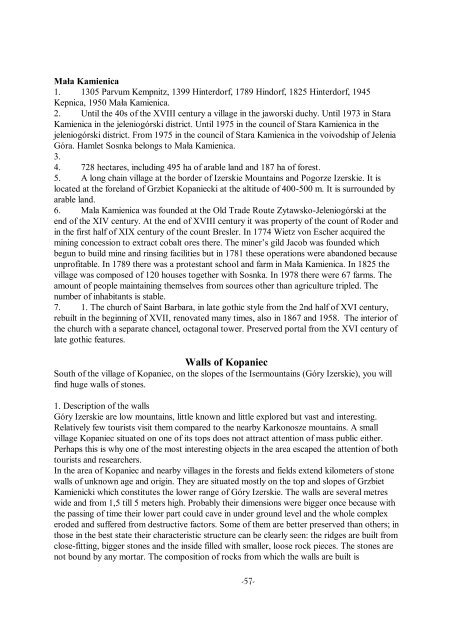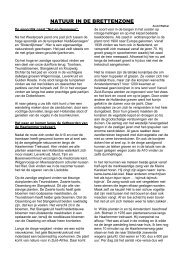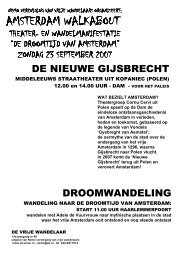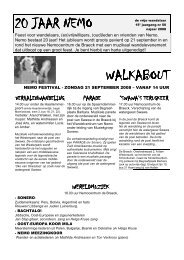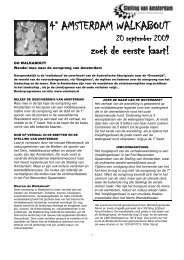Glashütten des Spätmittelalters im Isergebirge - Nemo
Glashütten des Spätmittelalters im Isergebirge - Nemo
Glashütten des Spätmittelalters im Isergebirge - Nemo
Erfolgreiche ePaper selbst erstellen
Machen Sie aus Ihren PDF Publikationen ein blätterbares Flipbook mit unserer einzigartigen Google optimierten e-Paper Software.
Mała Kamienica<br />
1. 1305 Parvum Kempnitz, 1399 Hinterdorf, 1789 Hindorf, 1825 Hinterdorf, 1945<br />
Kepnica, 1950 Mała Kamienica.<br />
2. Until the 40s of the XVIII century a village in the jaworski duchy. Until 1973 in Stara<br />
Kamienica in the jeleniogórski district. Until 1975 in the council of Stara Kamienica in the<br />
jeleniogórski district. From 1975 in the council of Stara Kamienica in the voivodship of Jelenia<br />
Góra. Hamlet Sosnka belongs to Mała Kamienica.<br />
3.<br />
4. 728 hectares, including 495 ha of arable land and 187 ha of forest.<br />
5. A long chain village at the border of Izerskie Mountains and Pogorze Izerskie. It is<br />
located at the foreland of Grzbiet Kopaniecki at the altitude of 400-500 m. It is surrounded by<br />
arable land.<br />
6. Mala Kamienica was founded at the Old Trade Route Zytawsko-Jeleniogórski at the<br />
end of the XIV century. At the end of XVIII century it was property of the count of Roder and<br />
in the first half of XIX century of the count Bresler. In 1774 Wietz von Escher acquired the<br />
mining concession to extract cobalt ores there. The miner’s gild Jacob was founded which<br />
begun to build mine and rinsing facilities but in 1781 these operations were abandoned because<br />
unprofitable. In 1789 there was a protestant school and farm in Mała Kamienica. In 1825 the<br />
village was composed of 120 houses together with Sosnka. In 1978 there were 67 farms. The<br />
amount of people maintaining themselves from sources other than agriculture tripled. The<br />
number of inhabitants is stable.<br />
7. 1. The church of Saint Barbara, in late gothic style from the 2nd half of XVI century,<br />
rebuilt in the beginning of XVII, renovated many t<strong>im</strong>es, also in 1867 and 1958. The interior of<br />
the church with a separate chancel, octagonal tower. Preserved portal from the XVI century of<br />
late gothic features.<br />
Walls of Kopaniec<br />
South of the village of Kopaniec, on the slopes of the Isermountains (Góry Izerskie), you will<br />
find huge walls of stones.<br />
1. Description of the walls<br />
Góry Izerskie are low mountains, little known and little explored but vast and interesting.<br />
Relatively few tourists visit them compared to the nearby Karkonosze mountains. A small<br />
village Kopaniec situated on one of its tops does not attract attention of mass public either.<br />
Perhaps this is why one of the most interesting objects in the area escaped the attention of both<br />
tourists and researchers.<br />
In the area of Kopaniec and nearby villages in the forests and fields extend kilometers of stone<br />
walls of unknown age and origin. They are situated mostly on the top and slopes of Grzbiet<br />
Kamienicki which constitutes the lower range of Góry Izerskie. The walls are several metres<br />
wide and from 1,5 till 5 meters high. Probably their d<strong>im</strong>ensions were bigger once because with<br />
the passing of t<strong>im</strong>e their lower part could cave in under ground level and the whole complex<br />
eroded and suffered from <strong>des</strong>tructive factors. Some of them are better preserved than others; in<br />
those in the best state their characteristic structure can be clearly seen: the ridges are built from<br />
close-fitting, bigger stones and the inside filled with smaller, loose rock pieces. The stones are<br />
not bound by any mortar. The composition of rocks from which the walls are built is<br />
-57-


